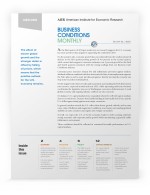December Business Conditions Monthly
For the U.S. economy, growth remains a bit below average but relatively steady, while the challenges and outlook for each major sector are very different. The Great Recession wiped out many excesses of the prior expansion. Yet since that expunging process concluded, some parts of the economy still remain weak while others have rebounded admirably.
On the inflation front, the seemingly unending battle of the past four decades against inflation turned into a war against deflation during the recession. New battle plans were drawn and new weapons were conceived. Now with the threat of deflation waning, policymakers and investors are preparing to refocus on inflation concerns.
For investors, much of 2014 was characterized by long periods of calm only to be disturbed by brief bouts of volatility. Fixed income markets coped with the end of quantitative easing (QE) by the Federal Reserve, a mixed outlook for inflation, which trailed the Fed’s 2 percent target most of the year, and a relentless demand for the safety of U.S. Treasury securities. American equity markets marched persistently higher, supported by solid growth in earnings, a strengthening dollar, favorable comparisons to foreign capital markets, subdued inflation and lower treasury yields.
The one thing that remains constant in the world of economics, economic policy and capital markets is the emergence of new tensions, chaos and a constant flow of change. From political instability to new technologies, the global economy is in constant motion. In that respect, 2015 is likely to be no different than 2014: full of surprises. However, we offer our perspective on the areas within the economy and capital markets that deserve extra attention as the New Year unfolds.
[pdf-embedder url=”https://www.aier.org/wp-content/uploads/2014/12/AIER_BCM_December2014_0.pdf“]




